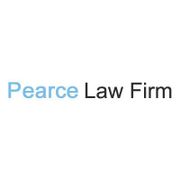What Are the Different Types of Personal Bankruptcy?

There are many people face financial hardship due to overwhelming debt. Fortunately, individuals may pursue a fresh start and achieve relief through bankruptcy. When filing, you will usually encounter two options to choose from: Chapter 7 and Chapter 13. Each determines eligibility and treats debt differently, so it’s wise to first understand the two and identify which would best suit your unique situation.
Chapter 7
 Filing a Chapter 7 bankruptcy requires passing a means test to show you don’t earn enough to pay back creditors. It is also known as a liquidation bankruptcy because non-exempt assets may be liquidated to help repay a portion of what you owe. In most states, the list of exemptions is extensive enough for debtors to keep the majority, if not all, of their assets. Many people prefer this option because it allows them to discharge all unsecured debt, meaning all financial obligations related to credit cards, personal loans, and medical bills get wiped out once you finish the case.
Filing a Chapter 7 bankruptcy requires passing a means test to show you don’t earn enough to pay back creditors. It is also known as a liquidation bankruptcy because non-exempt assets may be liquidated to help repay a portion of what you owe. In most states, the list of exemptions is extensive enough for debtors to keep the majority, if not all, of their assets. Many people prefer this option because it allows them to discharge all unsecured debt, meaning all financial obligations related to credit cards, personal loans, and medical bills get wiped out once you finish the case.
Chapter 13
A Chapter 13 bankruptcy is designed to help those with regular incomes reorganize their debt into an affordable payment plan. Should you meet the qualifications for this type of bankruptcy, which is having a steady income and owing less than $1,149,525 in secured debt and $383,175 in unsecured debt, you will retain all assets while working to pay back what’s owed over the next three to five years. At the end of this period, the rest of your unsecured debt may be discharged.
If you wish to declare bankruptcy, the complex laws and filing procedures call for professional assistance. Pearce Law Firm offers over 15 years of experience helping the residents of Foley, AL, alleviate their financial troubles. As a practice that specializes in bankruptcy law, they provide the quality guidance you need to successfully gain freedom from debt. Call (251) 971-2676 to set up a consultation, or visit online to learn more about their background and expertise.
About the Business
Have a question? Ask the experts!
Send your question

